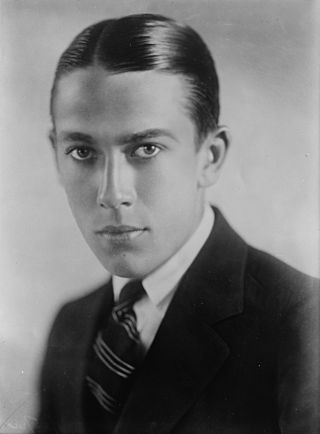
Jack Pickford, was a Canadian-American actor, film director and producer. He was the younger brother of actresses Mary and Lottie Pickford.

A gold digger is a person, typically a woman, who engages in a type of transactional sexual relationship for money rather than love. If it turns into marriage, it is a type of marriage of convenience.

Ida Estelle Taylor was an American actress who was the second of world heavyweight champion Jack Dempsey's four wives. With "dark-brown, almost black hair and brown eyes," she was regarded as one of the most beautiful silent film stars of the 1920s.

Show People is a 1928 American synchronized sound comedy film directed by King Vidor. While the film has no audible dialog, it was released with a synchronized musical score with sound effects using both the sound-on-disc and sound-on-film process. The film was a starring vehicle for actress Marion Davies and actor William Haines and included notable cameo appearances by many of the film personalities of the day, including stars Charlie Chaplin, Douglas Fairbanks, William S. Hart and John Gilbert, and writer Elinor Glyn. Vidor also appears in a cameo as himself, as does Davies.
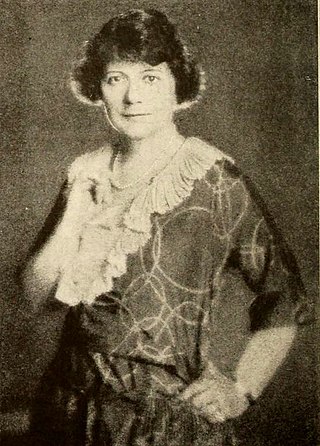
Marion Fairfax was an American screenwriter, playwright, actress, and producer.

Peggy Hopkins Joyce was an American actress, artist's model, columnist, dancer and socialite. In addition to her performing career, Joyce was widely known for her flamboyant life, numerous engagements and affairs, six marriages, subsequent divorces, collections of diamonds and furs, and her lavish lifestyle.

Marshall Ambrose "Mickey" Neilan was an American actor, director, producer, and screenwriter, whose work in films began in the early silent era.

Alice Beatrice Calhoun was an American silent film actress.
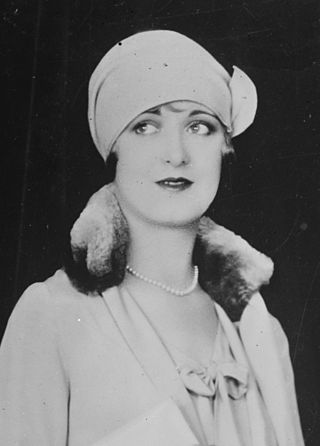
Kathryn McGuire was an American dancer and actress.

Beau Geste is a 1926 American silent drama film directed by Herbert Brenon and based on the 1924 novel Beau Geste by P. C. Wren. Ronald Colman stars as the title character.

Gladys Hulette was an American silent film actress from Arcade, New York, United States. Her career began in the early years of silent movies and continued until the mid-1930s. She first performed on stage at the age of three and on screen when she was seven years old. Hulette was also a talented artist. Her mother was an opera star.
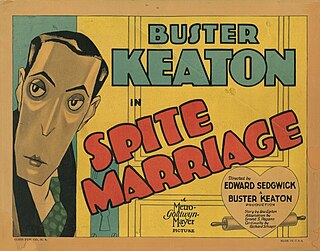
Spite Marriage is a 1929 American silent comedy film co-directed by Buster Keaton and Edward Sedgwick and starring Keaton and Dorothy Sebastian. It is the second film Keaton made for MGM and his last silent film, although he had wanted it to be a "talkie" or full sound film. While the production has no recorded dialogue, it does feature an accompanying synchronized score and recorded laughter, applause, and other sound effects. Keaton later wrote gags for some up-and-coming MGM stars like Red Skelton, and recycled many gags from Spite Marriage, some shot-for-shot, for Skelton's 1943 film I Dood It.
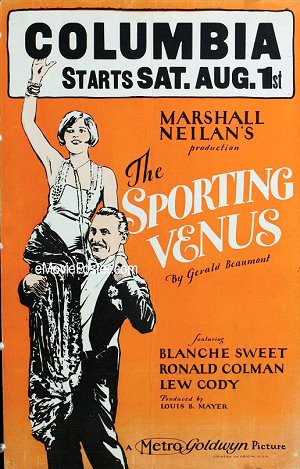
The Sporting Venus is a 1925 American silent romantic drama film directed by Marshall Neilan. The film was the second MGM release of Neilan, and starred his wife, actress Blanche Sweet, who allegedly sported the lowest waistline of 1925. This is the first of two feature films that paired Ronald Colman with Blanche Sweet, the second being His Supreme Moment, which was released in May 1925.

Dancing Mothers is a 1926 American black and white silent drama film produced by Paramount Pictures. The film was directed by Herbert Brenon, and stars Alice Joyce, Conway Tearle, and making her debut appearance for a Paramount Pictures film, Clara Bow. Dancing Mothers was released to the general public on March 1, 1926. The film tells the story of a pretty mother, who was almost cheated out of life by a heartless husband and a thoughtless daughter. The film survives on 16mm film stock and is currently kept at the UCLA Film and Television Archive.

Dinty is a 1920 American silent comedy drama film written by Marshall Neilan and John McDermott specifically for Wesley Barry, a young actor known for his freckled complexion. Prominent among the supporting players were Colleen Moore, Marjorie Daw, Pat O'Malley, and Noah Beery.
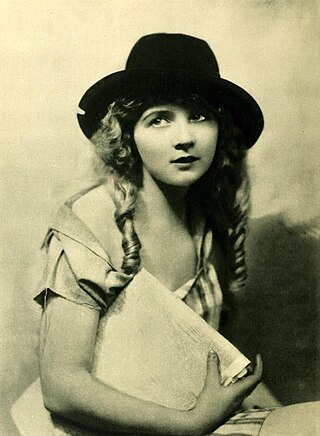
Gladys Leslie Moore was an American actress in silent film, active in the 1910s and 1920s. Though less-remembered than superstars like Mary Pickford, she had a number of starring roles from 1917 to the early 1920s and was one of the young female stars of her day.
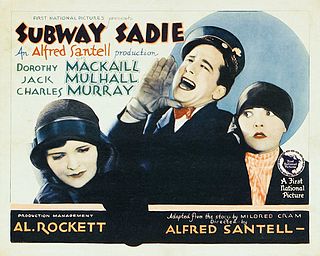
Subway Sadie is a 1926 American silent comedy-drama film directed by Alfred Santell. Adapted from Mildred Cram's 1925 short story "Sadie of the Desert", the film focuses on a relationship between New York salesgirl Sadie Hermann and subway guard Herb McCarthy, who meet on the subway and become engaged. However, after Sadie receives a promotion, she must choose between her new job and marrying Herb. The cast also includes Charles Murray, Peggy Shaw, Gaston Glass, and Bernard Randall.

The Darling of New York is a 1923 American silent comedy film directed by King Baggot and written by Adrian Johnson and Raymond L. Schrock. The film stars Baby Peggy, her first feature film. The film was released on December 3, 1923, by Universal Pictures. In the film, Baby Peggy plays Santussa, who after she is taken by a gang of jewel smugglers is able to reform them.

The Near Lady is a 1923 American silent comedy film directed by Herbert Blaché and written by Hugh Hoffman. The film stars Gladys Walton, Jerry Gendron, Hank Mann, Kate Price, Otis Harlan, and Florence Drew. The film was released on December 3, 1923, by Universal Pictures.

Lucille Lee Stewart was an American film actress of the silent era. Her screen career lasted between 1910 and 1926, during which time she played a mixture of lead and supporting roles.

























